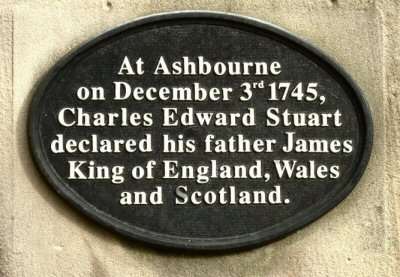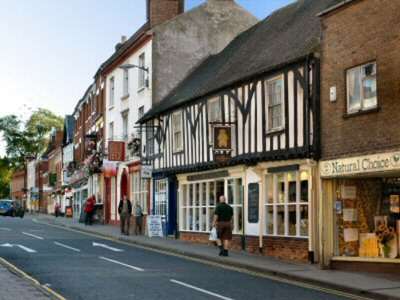ASHBOURNE
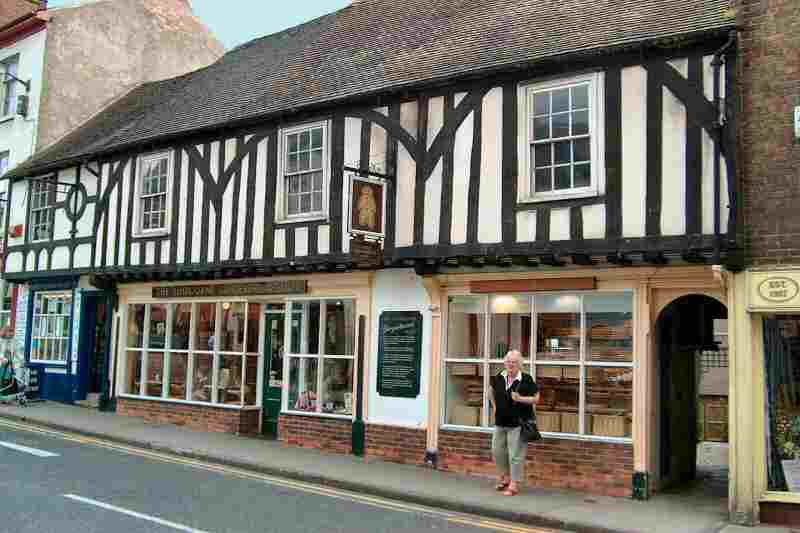
PLAN YOUR DAY OUT
Location: On the A52 between Stoke-on-Trent and Derby. (SK180468).

Visit the Ashbourne Historical Centre and Information Point in the Town Hall. – St. Oswald’s Church, situated on the edge of the town, is one of the most admired landmarks in the county. – Explore Ashbourne’s cobbled marketplace.
Refreshments: The Gingerbread Shop is a great favourite. The town has several pubs, cafes, and restaurants to suit all tastes.
Walk: Take a lovely, relaxing walk through Osmaston Park woodlands to the pretty village of Shirley. Then, return alongside Shirley Brook, past an ornamental lake, before climbing gently back to the starting point.
Special Places of Interest: Tissington is one of the country’s prettiest and most unspoilt villages. With its pretty limestone cottages and well-tended gardens behind wide grass verges and backed by mature trees. Further up the main village street is Tissington Hall, a fine Jacobean Manor House, standing slightly above the road behind a walled garden. – Following the railway line through the villages closure in the 1960s, the trackbed was removed and turned into a trail to benefit walkers, cyclists, and horse riders. Since opening to the public in June 1971, it has been successful. – Carsington Water, officially opened by HM the Queen in 1992, instantly became one of Derbyshire’s most important tourist attractions. Only a short, easy walk from the Visitor Centre car park is the wildlife centre, where you can watch Carsington’s birdlife in warmth and comfort. Posters on the wall help identify the birds spotted for those who are not experts.
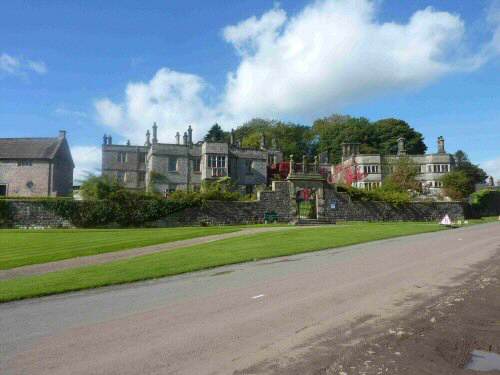
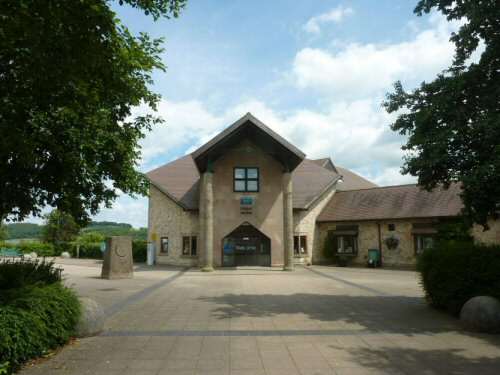
INTRODUCTION
The historic market town of Ashbourne lies in the valley of Henmore Brook and on the edge of the Peak District National Park. Its location has led to it being frequently called the ‘Gateway to Dovedale and the Peak District’. But Ashbourne is much more than a mere gateway, with its many fine buildings, bustling market and busy shops. It is a town to stop and explore and enjoy the numerous surprises in its ancient streets, cobbled marketplace, hidden alleys and yards. Conservation Area status has protected most of the town since 1968.
Initially, the town lay only to the north of Henmore Brook, with the tiny hamlet of Compton to the south. However, by the 13th century, trade prospered in Compton, and taxes were avoided by trading on that side of the Henmore. As Crown Property, Ashbourne had to pay the king’s dues. Both have long joined, but the street name ‘Compton’ recalls the old village.
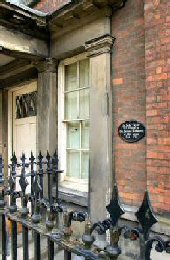
SHROVETIDE FOOTBALL
Nowadays, the most important distinction remembered by those interested in Shrovetide Football is that people who live north of Henmore Brook are referred to as the ‘Up’ards’ and those to the south as the ‘Down’ards’. This geographical factor decides the sides for the famous Royal Shrovetide football games, which take place on Shrove Tuesday and Ash Wednesday every year. The goals are three miles apart; traditionally, the game is played without rules. However, one ancient rule is that you must not murder your opponent, to which one or two others have been added.
The game used to start in the marketplace but moved to the Shaw Croft car park to try to avoid unnecessary damage from the roughhouse that follows. After the singing of the National Anthem, the ball is ‘turned up’, usually by some well-known celebrity who throws the ball to the assembled crowd for mayhem to begin. In 1928, HRH, the Prince of Wales, turned up the ball, and ever since then, the title of the game has had the ‘Royal’ prefix. Further Royal recognition came in 2003 when Prince Charles started the game.
MARKET TOWN
Ashbourne grew as a market centre at the junction of several roads, the most important being the old main road linking London and Manchester. The road passes through Macclesfield and Leek before reaching Ashbourne and heading off to Derby. Stagecoaches regularly used the route in the 18th century, and Ashbourne was a crucial stopping-off place. The town’s significance during that period was highlighted by the census of 1676, when Ashbourne’s population exceeded that of Derby.
When horse-drawn transport began to be replaced by the railway, the town failed to get mainline status, only being allowed a branch line to Uttoxeter. The line brought many tourists bound for Dovedale, where they could enjoy a walk in beautiful surroundings and return home all on the same day.
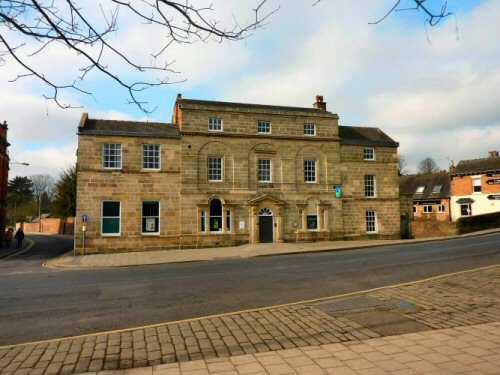
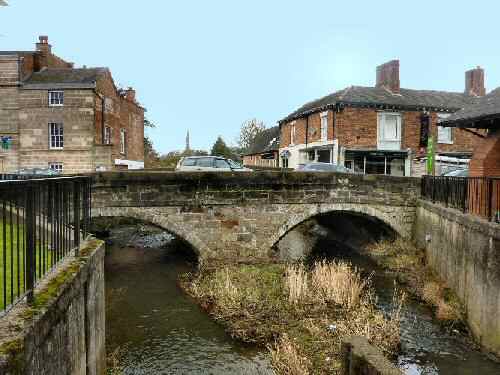
ARCHITECTURAL PRESERVATION
Over the centuries, Ashbourne has preserved much of its architectural character. From 1700 to 1820, fashionable brick and stone townhouses replaced the former medieval buildings. The advent of the railways and the Victorian era saw several small industries set up. However, Ashbourne’s medieval layout remained unchanged, with a long, straight main street and a large triangular marketplace. The marketplace, though, has been encroached upon by buildings and is now much smaller than the original design.
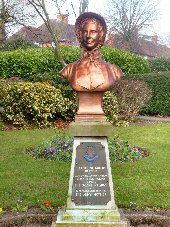
ST. OSWALD’S CHURCH
St Oswald’s Church, situated on the edge of the town, is one of the most admired landmarks in the county. Its graceful spire, which rises to 212 feet, attracts many visitors. The current building was built in the early 13th century. Nothing remains of the former Norman Church, although a Norman Crypt was found during the 19th century. Inside is an extensive collection of impressive statues, with the sculpture of Penelope Boothby in pure white Carrara attracting the most attention. The brass plaque commemorates the consecration of 1241 and is claimed to be the oldest remaining in this country. Building work continued on the transepts and nave until 1280.
THE OLD GRAMMAR SCHOOL
The Old Grammar School was founded in 1585 by the Royal Charter of Queen Elizabeth. Four hundred years later, another Queen Elizabeth, the Second, visited Ashbourne to celebrate the 400th anniversary of the school. Over the years, the school had become too small to meet the needs of the 20th century, and a new school was built on Green Road. The old school continued in use for many years after that, but in 1997, the decision to sell the Grade I listed building was taken. The pavement cobbles outside the Old Grammar School came from the River Dove and are scheduled as an ancient monument.
MARKET PLACE
At the top of the cobbled marketplace, the Wright Memorial was erected in memory of Francis Wright, a benefactor to the town but not universally popular. His action of stopping the annual fair, which he disapproved of, and his efforts to halt Shrovetide football did not go down well with many of the inhabitants.
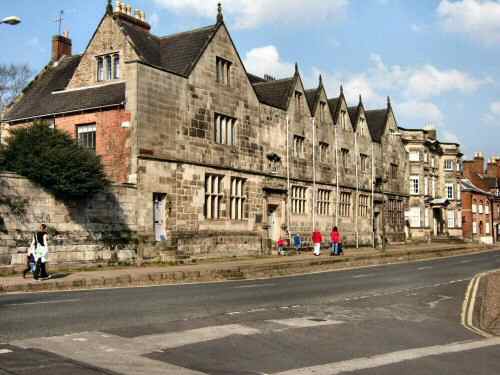
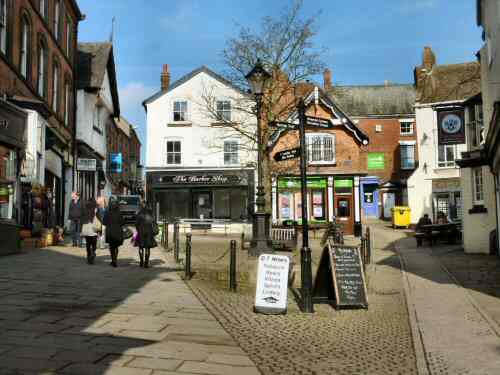
TEN FASCINATING FACTS
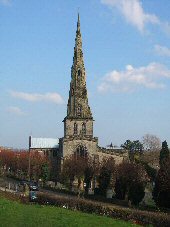
1. In December 1745, Bonnie Prince Charlie proclaimed his father King James III in Ashbourne Market Place. He stayed the night at Ashbourne Hall.
2. Across St John’s Street hangs one of only a small number of gallows signs that remain. The top part of the sign has been removed.
3. In the War Memorial Gardens is a bust of Catherine Mumford, who was born in 1829 in a small terraced house in Sturston Road, Ashbourne. She married William Booth and helped him create the Salvation Army.
4. The former railway tunnel at the top end of the Leisure Centre car park was re-opened on 21 June 2000, thus becoming the new starting point for the Tissington Trail.
5. The Grade II-listed cast iron milestone in front of the town hall gives distances to London and Manchester. It dates from when the main road to London passed through the town.

6. One of two old beams to survive the ravages of the death watch beetle in St. Oswald’s Church carries the date 1706. A replacement beam records the words ‘Children’s Beam,’ having been paid for by the Sunday school children.
7. Ashbourne Marketplace once hosted all types of public events. Bull baiting was very popular, and the ring to which the unfortunate beast was tethered remained just in front of the Wright Memorial for many years.
8. It is said that in Napoleonic times, a French prisoner held in the town gave the recipe for gingerbread to an Ashbourne baker. The recipe has been used ever since.
9. The Gingerbread Shop is a unique example of a late 15th-century timber-built building, which has been in continuous use as a bakery since 1805.
10. When the police banned Shrovetide football in 1864, George Brittlebank, a lawyer who lived at Monument House, threw the ball to the angry crowd after it had been smuggled to him across the marketplace in a shopping basket carried by a local woman. He promised to defend, at no cost, anyone arrested playing the game.
Osmaston Park Walk

